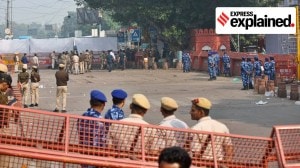Click here to follow Screen Digital on YouTube and stay updated with the latest from the world of cinema.
Lessons from Bollywood’s Rs. 100 – crore club
For marketers looking to build rational narratives for their products, the question is how much hope, optimism, happiness and feeling their brands can add to a consumer’s life. Bollywood’s blockbusters can help them find the answer
 Dabangg poster
Dabangg poster
Whoever first coined and used the term “Bollywood’s Rs.100 crore club”, knew a thing or two about branding. It’s catchy, it’s brazenly ambitious and it sticks. Bollywood’s new benchmark for cinematic success makes sense. Indians have always had a predilection for the quantitatively defined and the outdated “silver jubilee” slow burn had to be redefined in an era of film digitisation where a one-shot, nation-wide, weekend big-bang is the new form of marketing warfare. One cannot assume that “all is well” if a film earns Rs.100 crore. The number is designed to disguise obvious business realities like costs of production, a cartel-like industry that ensures no real direct competition, inflated ticket prices and a massive increase in the number of release screens. The Rs.100 crore club is also not a guarantee of creative achievement. Dhoom 3 raked in more than Rs.250 crore and some pretty depressing reviews in its three-week run. But there’s something magical about this number that appeals to our statistically-susceptible nature and it’s a serious standard of marketing achievement because on the face of it, the Bollywood blockbuster is not an easy product to sell.
It’s retailed three to four times a day, in around 4000 outlets. Compare that to the instant availability of occasion buys like fast food in millions of retail outlets. A film has to engage people for at least two hours with a cocktail of storytelling, cinematography, action, music and dance. Imagine asking a traditional market researcher to calculate “per second active engagement” for 9000 seconds. Also, the product development team sets out with almost no knowledge of how the final product will actually shape up till they sit on the edit table. Marketing waits for the product, rather than influencing every minute detail at development. Despite these pitfalls, a Bollywood blockbuster generates revenues of over Rs.100 crore in just seven days, spending on an average Rs.10 crore on marketing per project excluding prints. For an average price of Rs.200, that’s a hell of a return on marketing investment.
So how do they do it? How does Bollywood build these power brands that attract so much attention so quickly? And why do only certain brands become so popular? A closer look at both content and promotion in the movie business today indicates some rather revealing strategies that might be worth evaluating while we in the traditional product-and-service world spend tens of crores of rupees on mass media ad campaigns.
Universal conflicts engage the masses
Bollywood blockbusters straddle the “primary audience youth, secondary audience everyone” strategy confidently. Most films today have typically youthful protagonists dealing with young themes like romance, action and coming-of-age. But hits become blockbusters by capturing the secondary audiences with universal drama that cuts across generations—like good avenging evil (Singham, Agneepath) or true love winning over society (Ram Leela, Barfi!). Popular brands tend to build narratives around powerful themes that affect everyone, not by avoiding conflict. Idea Cellular has managed growth and industry recognition by actively marrying service propositions with traditionally uncomfortable but powerful issues such as caste wars, girl-child education and even witness protection.
Stay honest to your product. Don’t over-promise benefits
The audience wants to know what they’re paying money for. Am I here to witness a romantic musical journey in gorgeous locales or an out-and-out action flick with dialogue-baazi? This is where trailers come in—creative yes, but never dishonest. Singham, Ghajini, YJHD, Chennai Express and Agneepath all gave you a clear picture of what to expect in the movie by clearly highlighting their unique selling propositions. No fancy claims about changing your life or path-altering independent cinema, just plain and simple entertainment. That’s easier said than done in advertising. We’ve used exaggeration as a device for generations to aid “instant comprehension”. But all the gimmicks, twists or special effects will fail to impress a smarter, information savvy and socially connected generation of young Indians if the promise doesn’t match the delivery. Young collegians know if they’re being promised too much love from the opposite sex thanks to a Rs.150 deodorant. Probably why Fogg, the first deodorant to talk logic with an “all liquid, no gas” proposition, took the male fragrance market by storm.
Overwhelm me with a condensed experience. Make “missing out” a non-option
What if marketing made your film an event and not a product? An intense four to six week marketing burst condenses, and hence intensifies, the entire experience. Media multiplier devices are used across the board—from the personal stories in the star’s life to being present in every major entertainment option on prime-time television, from a planned online event to releasing the trailer of the film to 21-day promotional bursts across the top 20 cities where the lead actors actually go to all major touch-points to literally welcome the paying public for their films—no stone is left unturned. Raj Kumar Hirani’s PK just released India’s first “motion poster”. Combine all this intensity with “paisa vasool” content—skyscraper shots, exotic locales, fancy cars, designer-dressed stars explosions, slow motion action, freeze frames, extreme close-ups, and dramatic sound design. This brazen backing of a product makes the decision for the consumer. You have to try it or miss a potentially grand experience. That’s why brands such as Nike and Apple choose to overwhelm you into making a brand decision—by a five-minute Guy Ritchie film starring the world’s greatest footballers or streaming Steve Job’s first public unveiling of the iPod live.
Great personas don’t come from great power, but from combining great archetypes
Today’s era of blockbusters is all about “cult creation” much like the world of club football. Once you pledge your allegiance to a club, you’re expected to watch every game. But what is it about the heroes that create such loyalty? Every single hero’s cycle of conflict and achievement comes from a cocktail of Jungian archetypes that they represent. Hence there are inherent “tensions” and conflicts that already engage us. Aamir Khan’s quirky change agents (3 Idiots) combine the naughtiness of the maverick magician and the perfectionism of the creator. Salman Khan’s all conquering heart-of-goldpranksters (every Bhai film) combine the classic justice-seeking hero and the irrepressible madness of the rebel. Ranbir Kapoor’s untamed idealist (Barfi, Yeh Jawaani Hai Deewani) combines the flawed optimism of the innocent with the never-ending quest for self of the explorer. The lesson for brands lies in being able to adopt such universal tensions seamlessly. Micromax has grown from being a “discount” challenger to the success story in mobile phones by combining the non-conformity of the explorer and the tongue-in-cheek disruption of the rebel.
There’s no reality better than the one we’d wish to “escape” to.
However, all the learnings in the world can’t really add up without delivering what the greatest show on earth gives us — escape, which has an unchained quality to it that cuts across age, religion or language. The 30-odd Rs.100 crore films give us that chance to empathise or may be even experience a life-altering escape. Blockbuster entertainment is not about changing society by showing you a real mirror, but a form of storytelling that combines mythology, culture and drama in a way that makes escape worth yearning for. We want Barfi to find his true love even if we don’t understand them, we feel relief when Tiger is alive despite being shot in Ek Tha Tiger and we cry when Vijay Dinanath Chauhan finally dies at the end of an epic struggle with evil. For marketers looking to build rational narratives for their products, the question remains—how much hope, optimism, happiness and feeling can your brand add to my life?
We might be well served by incorporating Bollywood’s lessons on combined archetypal heroism, condensed marketing, honesty and universal conflicts but perhaps the great divide between cinema and brand experience can be bridged better by making your “brand” (role in the customer’s life beyond utility) become a platform for true escape; a chance to improve, better or experience a reality that is worth yearning for, a chance to perhaps be a Rs.100-crore hero in our life’s own blockbuster dramas.
Gautam Talwar is chief strategy officer, Rediffusion Y&R, India while Spandan Mishra is partner – strategic planning, Rediffusion Y&R, India




- 01
- 02
- 03
- 04
- 05






























